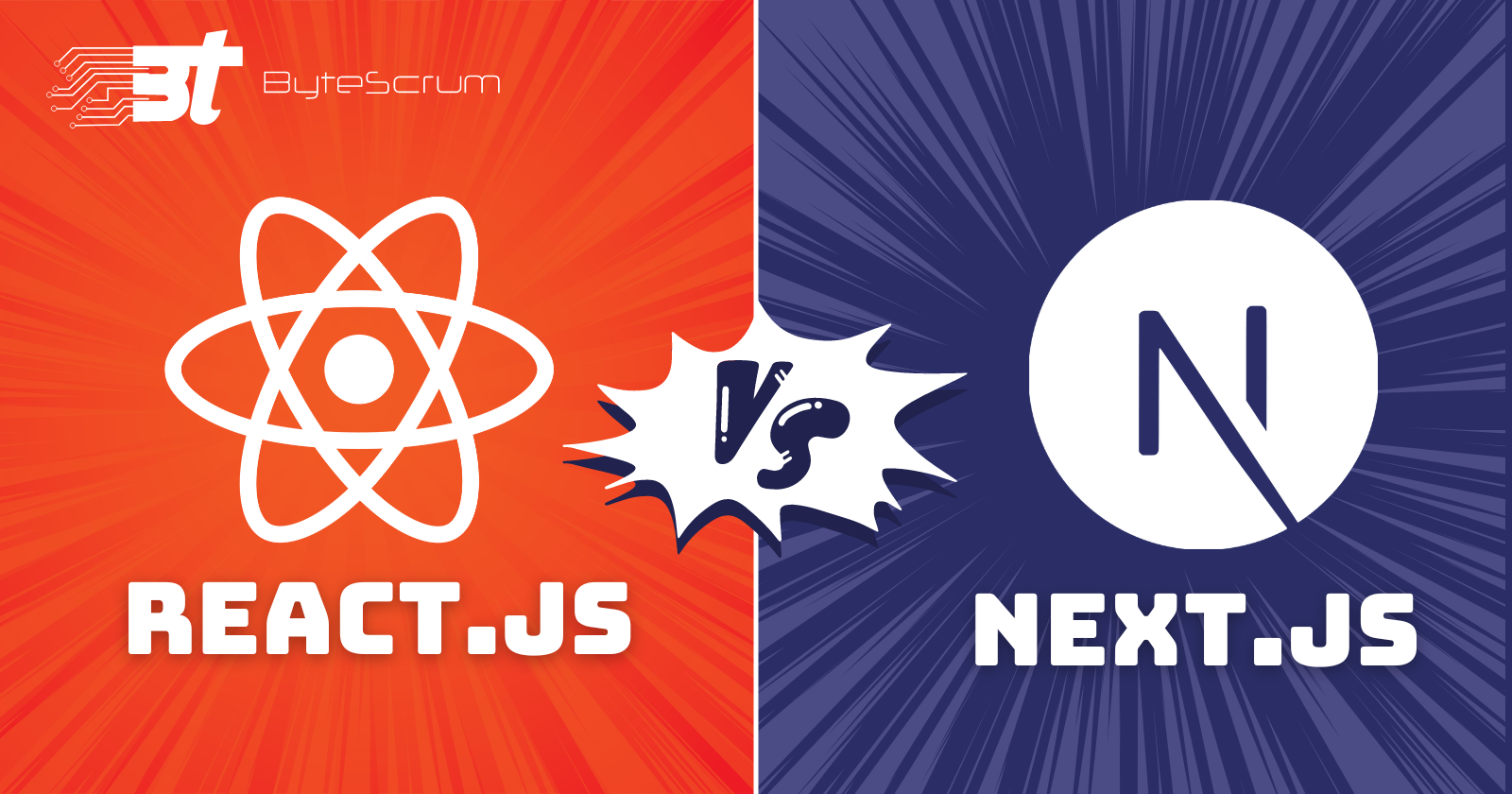Next.js vs. Create React App: Which One Should You Choose ?
 ByteScrum Technologies
ByteScrum Technologies
When starting a new React project, one of the critical decisions you need to make is selecting the right tool to set up and manage your application. Two popular choices are Next.js and Create React App (CRA). Both tools offer distinct advantages and cater to different project requirements. This guide will help you understand the differences between Next.js and Create React App, and assist you in choosing the best one for your project.
What is Create React App?
Create React App (CRA) is a boilerplate tool for quickly setting up a new React project with a standard configuration. Developed and maintained by Facebook, CRA aims to simplify the initial setup process and provide a development environment that includes:
Zero configuration
A standard project structure
Hot reloading during development
Built-in support for modern JavaScript features and CSS
A single-page application (SPA) focus
What is Next.js?
Next.js is a React framework developed by Vercel that provides additional features and optimizations out-of-the-box. It is designed to enhance the developer experience and improve application performance. Key features of Next.js include:
File-based routing
Incremental static regeneration (ISR)
Built-in CSS and Sass support
Key Differences
Project Setup
Create React App: Offers a quick and easy setup with a standard project structure. It is ideal for developers who want to start coding immediately without worrying about configuration.
npx create-react-app my-app cd my-app npm startNext.js: Also offers an easy setup but includes additional boilerplate for server-side rendering and static site generation.
npx create-next-app my-app cd my-app npm run dev
Rendering Methods
Create React App: Supports client-side rendering (CSR) only. All the rendering happens on the client side, making it suitable for SPAs.
Next.js: Supports multiple rendering methods:
Client-side rendering (CSR)
Server-side rendering (SSR)
Static site generation (SSG)
Incremental static regeneration (ISR)
Routing
Create React App: Uses React Router or any other third-party routing library. You need to manually configure routes in your application.
Next.js: Comes with a built-in file-based routing system. Simply create files and directories in the
pagesdirectory, and Next.js automatically handles the routing.
Performance and SEO
Create React App: Since it only supports CSR, performance and SEO might be less optimal compared to server-side rendering. All content is rendered on the client side, which can impact the initial load time and SEO.
Next.js: Offers SSR and SSG, which can significantly improve performance and SEO. By pre-rendering pages on the server or at build time, you ensure faster initial load times and better search engine indexing.
API Routes
Create React App: Does not include built-in support for API routes. You need to set up a separate backend server or use services like Firebase or AWS.
Next.js: Provides built-in API routes, allowing you to create serverless functions within the
pages/apidirectory. This feature simplifies the development process and reduces the need for a separate backend.
Customization and Configuration
Create React App: Provides a zero-configuration setup, but customization is limited unless you eject the configuration, which can complicate the development process.
Next.js: Offers more flexibility and customization options without the need to eject. You can easily configure Babel, Webpack, and other settings.
When to Choose Create React App
Simple SPA: If you are building a straightforward single-page application without complex requirements, CRA is an excellent choice.
Quick Prototyping: Ideal for quick prototyping and proof-of-concept projects where you need to get up and running fast.
Learning React: Perfect for beginners learning React, as it provides a standard project structure and development environment.
When to Choose Next.js
Performance and SEO: If your application requires excellent performance and SEO, Next.js's SSR and SSG capabilities are invaluable.
Content-Rich Sites: Ideal for content-heavy websites like blogs, e-commerce sites, and marketing pages where pre-rendering and fast initial load times are crucial.
Full-Stack Development: If you need to handle both frontend and backend logic within the same project, Next.js's API routes simplify the development process.
Complex Applications: Suitable for complex applications that benefit from advanced features like file-based routing, serverless functions, and incremental static regeneration.
Conclusion
Explore more about Create React App in the official documentation and Next.js in the official Next.js documentation.
Happy coding!
Subscribe to my newsletter
Read articles from ByteScrum Technologies directly inside your inbox. Subscribe to the newsletter, and don't miss out.
Written by

ByteScrum Technologies
ByteScrum Technologies
Our company comprises seasoned professionals, each an expert in their field. Customer satisfaction is our top priority, exceeding clients' needs. We ensure competitive pricing and quality in web and mobile development without compromise.